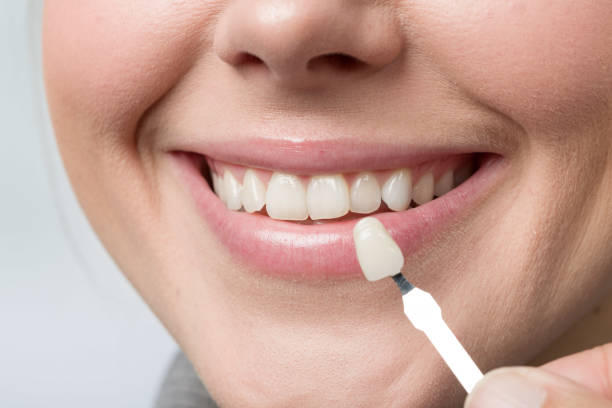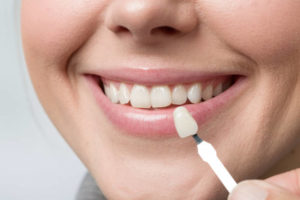What are The Pros and Cons of Dental Veneers?
Dental veneers are thin coverings that are bonded onto the tooth surface to permanently correct or change a tooth’s imperfections. It is made of composite resin or porcelain. The latter is the more popular option because they are able to resist stains. Also, they mimic the light-reflecting properties of natural teeth. Veneers can fix tooth discoloration caused by too much fluoride use or root canal treatment, as well as stains caused by cigarettes, coffee, and certain drugs like tetracycline.
Dentists install veneers on people with teeth that are broken, chipped, or worn down. They are a good option for those with uneven, misaligned, or irregularly shaped teeth. Veneers can also close spaces between teeth with large gaps. This is a fast, easy, and effective way to improve the appearance of a person’s teeth. Its end result makes people feel more attractive and confident.
Pros of Dental Veneers
- Durable and long-lasting. The average porcelain veneer is strong and durable enough to stand up to daily use and last for years. They can last for up to 20 years and still look good as new with proper care.
- Instant results. In most cases, all it takes is one or two appointments to get a smile transformation. Also, as soon as the procedure is done, you can eat and drink as you normally would. You do not have to go through multiple treatments and endure a long healing time.
- Natural-looking, translucent teeth. Porcelain veneers are white and translucent, reflecting light in the same way natural teeth enamel does. The layer of the dentin under the enamel is what the adhesive uses to bond to the layer under the veneer, giving veneers a look similar to natural teeth.
- Quick and easy teeth whitening. Veneers can give you clean, white teeth quickly and easily. Bleaching takes time and is only a temporary solution for stained teeth, as the stains will return unless you stop drinking coffee or smoking cigarettes. With veneers, you can just wipe the stains off of them.
- Stain-resistant. Because porcelain is ceramic and like glass, stains tend to roll off or easily be wiped off. This means porcelain veneers will look white for years – even when you consume stain-producing food and beverages – for as long as you follow basic dental hygiene.
- Repair minor cosmetic issues. If you have misaligned, discolored, chipped, cracked, or gap teeth, porcelain veneers can help. Veneers can repair minor cosmetic issues, transforming rough-looking teeth into straight, whole pearly whites.
Cons of Dental Veneers
- Veneers can get damaged. Biting carelessly on non-food items can damage and shorten the life span of veneers. Biting on a pen cover, for example, can cause cracks and chips that can require veneer replacement.
- Irreversible process. To install veneers on the teeth, the dentist will have to remove a thin layer of tooth enamel to ensure that the veneers fit over the teeth. This step is irreversible because once tooth enamel is removed, it can never grow back.
- Tooth sensitivity. Because a layer of tooth enamel is removed during the veneer installation, you can develop increased sensitivity to hold and cold food and beverages. Tooth sensitivity, however, is usually mild and temporary.
- Shorter lifespan than dental crowns and bridges. Although not exactly a bad thing, this is something that you should consider when weighing the merits of the pros and cons of dental veneers and choosing the best option to fix your dental woes.
It is important to consider the benefits and side effects of veneers, along with their purpose and what they do to your teeth. Use the list of pros and cons below to help you decide on the best option for you. Schedule a consultation with a reputable dentist in your area now to see if dental veneers are the right option for you.






 |
|